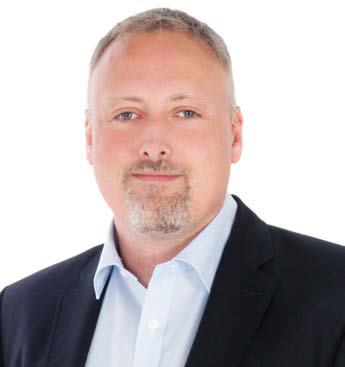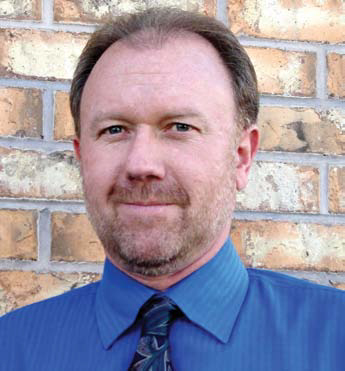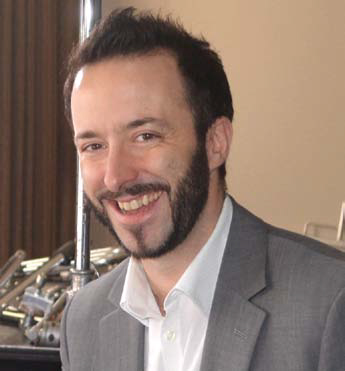Managing Production in the Cloud
HAMILTON, N.J.—Today’s digital content management systems need to automate the process of managing and moving media assets, in whatever formats are needed, wherever they need to go.
According to top vendors in the broadcast industry surveyed by TV Technology, expanding the role of digital asset management in the automation chain, using cloud-based workflows to reduce operating costs and simplifying media processes for greater productivity and freedom are among the key trends in 2014.
Kevin Usher, Avid Technology HOWEVER, WHEREVER, WHENEVER
“If you can provide all your creative production teams with secure access to all the digital content in the enterprise— from any connected device via a standard web browser—then you’ve defined a level of functionality that no one has seen or had before,” said Kevin Usher, director for the broadcast and media segment team at Avid Technology, in Burlington, Mass. “The cloud is the future. And that’s why most Avid systems are now cloud-enabled.”

Consistent with the Avid Everywhere vision of creative collaboration and Avid MediaCentral Platform for cost-efficient, streamlined workflows, this modular solution now gives users secure 24/7 access to their digital media assets from wherever they’re working across the Internet.
Avid Media Composer | Cloud (formerly Interplay Sphere), Pro Tools | Cloud and MediaCentral | UX (formerly Interplay Central) are among the Avid systems that offer remote collaboration via a private cloud connection. Usher added, “Whether you’re on a Mac or Windows workstation in the studio, a laptop or mobile device in the field, you can access media and work on projects across the Avid MediaCentral Platform, enabling you to work however, wherever, and whenever you want.”
Warren Arenstein, Primestream ‘WORKFLOW IN THE CLOUD’
“Whether their assets are on-premises or in the cloud, people want to access their digital content whenever and wherever they are from a web browser or native iOS iPad application,” said Warren Arenstein, vice president of business development for Primestream. “It’s less about working in a specific application and more about having the kind of user experience they’re familiar with from sites like YouTube and Vimeo.”

When Primestream introduced FORK Xchange in 2012, the company realized that asset management was evolving to encompass the entire production workflow from ingest through distribution and archive. Xchange provides “everywhere” access so users can download source content with markers and metadata that facilitate frame-accurate editing; and upload the media back again, making it faster to collaborate and produce a final product.
Get the TV Tech Newsletter
The professional video industry's #1 source for news, trends and product and tech information. Sign up below.
“This is more than just media in the cloud, it’s about workflow in the cloud,” said Robert Lisman, director of marketing for the Miami-based company. “Customers want access to all types of content and metadata outside of the constraints of a network client/server architecture and deliver it wherever it needs to go.”
Regis Andre, Grass Valley TIMESAVING ADVANTAGES
Regis Andre, senior director product management, digital media workflows at Grass Valley says that the first wave of digital asset management systems failed to deliver on the promise of saving broadcasters money. As a result, return on investment is their customers’ biggest priority now.

“By taking a completely different approach, our GV Stratus is a next-generation digital content management system that delivers on the promise of reducing operating expenses,” he said.
GV Stratus hides the technicalities associated with the task, such as checking media in or out of the database, converting file formats, repurposing broadcast video content for the web, and other mundane steps. “With this automated workflow, a user might only save a few minutes, but if that job is something they do 10 to 20 times a day, that small time savings could end up saving them weeks per year, which can recoup the investment,” Andre added.
The cloud also poses timesaving advantages. While it’s not efficient to move hi-res HD or 4K files to or from the cloud, users can just move proxies and databases and workflow automation tasks to the cloud, making it easier to search for media assets from any location and taking advantage of the economics of using easy-to-scale up and down solutions in the cloud.
Shawn Maynard, Florical OUTSIDE THE BOX
Shawn Maynard, president of Florical Systems in Gainesville, Fla. says automation can solve many of the repetitive tasks in today’s broadcast plant. “If all stations in a broadcast group need to air the same syndicated programs and commercials, why not have one station ingest, time and prepare those files for air once, then make them available to the multiple stations in the group?” Maynard said, pointing to the company’s SmartCentral, a private, advanced IT private cloud architecture that lets users manage the automation systems, enabling hands-free on-air workflows.

“This outside-the-box solution would result in tremendous savings because groups wouldn’t have staff at each station duplicating efforts, or need so much hardware at each station. They could also maximize the fiber networks they’ve already installed between stations to distributed prepared content,” Maynard said. This workflow is comprised of Florical’s AssetDispatcher, which automates central acquisition and ingest, and AssetCollector, which pushes file-based syndicated programming and commercials to play-to-air servers.
“From any networked computer, I can control and monitor multiple broadcast channels, make changes to lineups, and see what files are moving between stations, among other tasks in a cost-efficient way that benefits the group,” Maynard said.
Steve Penney, Snell PURPOSE BUILT
Steve Penny, Momentum media asset management and workflow specialist at U.K.-based Snell (which was acquired by Quantel earlier this year), points to the product’s flexibility and openness as its strongest features. “Momentum is purposebuilt to manage the entire content management and broadcast automation workflow for multiplatform content distribution,” he said. “But it’s flexible enough to cooperate with existing third-party systems, like traffic, ad sales, and playout, to support the most efficient workflow.

“Broadcasters can also change the workflow, on the fly, such as redirecting the content to a new device or sending late delivered content to any platform, such as commercials to playout, or reversioned VOD content to nonlinear platforms,” he added.
Penney notes that a chief customer concern is the management of exponential amounts of metadata. “It’s not unusual for broadcasters to add 50,000 media assets to their systems annually, each of which has scores of metadata information associated with it,” Penney said. Momentum goes beyond tracking video and audio elements to drill down into deeper layers of content, like closed captioning, QC reports, scripts, and other granular criteria to access and track desired content quickly.
On the market now for four years, Momentum has a forward-thinking architecture that intuitively manages mission-critical content management and automation tasks, according to Penney. But, he adds, it also offers administrative safeguards, support for rapidly changing formats like 4K resolution, and support for emerging technologies like cloud configurations.
Reed Haslam, Nverzion AUTOMATING THE ENTIRE PROCESS
At Nverzion, in Salt Lake City, Reed Haslam, the company’s director of sales, sees several major trends affecting the digital content management landscape. The first is that stations want to automate the preparation of content, like syndicated programs and commercials, arriving on cache services like Pathfire and Pitch Blue. This prevents operator error, increases workflow productivity and ensures an efficient acquisition process that’s consistent throughout the on-air chain.

“The key is to automate the entire process involved with getting these files in the right format needed for air, such as timing the segments, renaming the files, and preserving all relevant metadata describing that asset,” Haslam said.
Nverzion takes a modular approach to broadcast automation, including its NCompass, NView and NBase modules, which work together to manage the asset database and metadata in an automated way. XPansion, another module, can help manage the transfer of files onto different devices within the facility according to the log, including mirroring files on different playout servers. When the NGenius open source storage solution is added, this workflow can be expanded to the cloud, where content is stored on redundant LTO-5 libraries in a highly secure data center.
For News Automation, the Goals Are Similar
Rick Young, Bitcentral HAMILTON, N.J.—According to Rick Young, vice president of sales and product strategy for Bitcentral, customers of the Newport Beach, Calif.-based developer of news automation systems want to find and retrieve digital media assets to create valuable content they can publish to a wide range of on-air and digital platforms. “Our Core:news platform lets them focus on being creative because all the underlying technical processes and integrations are taken care of for them,” he said.

Since Bitcentral’s simplified workflows are browser-based, users can collaborate across multiple locations around the world—even using mobile devices and laptops—as if they’re working from within the same newsroom or facility.
“We use the cloud to streamline production in the most cost-effective way, meaning only where it makes sense to do so,” Young said. “Our strategy is to build hybrid media management workflows that enable simplified processes for content creation.”
In Bitcentral’s platform, high-res media files remain at the network’s edge, but the system provides constant and immediate access to the video and metadata. This makes it easier for journalists and producers to locate, retrieve, edit and publish that media to any platform.
Mike Palmer, Masstech VIDEO FOLLOWS TEXT
Masstech for News is a digital content management solution that integrates seamlessly within newsroom computer systems (NRCS), such as AP ENPS, Avid iNews and Ross Inception. “It’s like having the newsroom sit on top of the asset management layer,” said Mike Palmer, vice president and general manager, news division of the Masstech Group. “Journalists can quickly access, retrieve and use video assets right from their NRCS user interface without realizing they are actually using Masstech for News.”

Palmer added that Masstech’s system also provides tools for media managers to do “deeper dives” to search for content in connected databases and archives. “If journalists want to move and share data between two different sites, our system forms a bridge between different vendor platforms so they can exchange editorial content without worrying about the technical processes involved,” Palmer said. “It’s all done transparently as a background process.”
With the “Video-Follows- Text” feature of Masstech for News, video, text, metadata and other related assets remain connected, and video can be attached to a script like an email attachment. “Customers are asking for simpler ways to do things to make their staffs more productive,” Palmer said. “And having the video move with the story makes it easier to share editorial content between different sites, cut down on errors and save journalists considerable time.”
Claudia Kienzle
“When multiple stations in a broadcast group need to air the same program content, they can save time by preparing that shared content once for air, then having all the stations access it from the cloud,” Haslam said. “Broadcasters are slowly realizing the time and cost efficiencies enabled by cloud-based, automated digital content management.”
Frederic Roux, Dalet FULLY LEVERAGED
While metadata has long been essential for locating assets within a large database, Dalet envisions that metadata, digital rights information and other ancillary data can now be fully leveraged by digital content management systems to automate the entire workflow.

“Today our media asset management solutions, powered by the Dalet Galaxy platform, leverage all kinds of metadata to orchestrate the entire workflows, from ingest through distribution,” said Frederic Roux, director of sales for the U.S. and Canada, for Dalet Digital Media Systems, in New York. “Resource assignments, content handling and media conversion tasks are automated in an intelligent way, making news, sports, program preparation, program production, sports, radio and archives productions much more efficient.
“The Dalet Galaxy MAM platform strategically uses metadata to determine where assets are, where they need to be, what formats are required, how long that asset may be available to certain outlets and other vital business details,” Roux added. “The overarching goal is to leverage the facility’s media assets to optimize their workflow and monetize their content.”
Users can then focus on being creative rather than “heavy lifting” tasks—like adding closed captions, transcoding formats, foreign language tracks and quality control—that weigh down productivity. Dalet’s platform is built on IT-based SOA architecture and an open business process management (BPM) workflow engine.
Huw Dymond, Imagine Communications INTUITIVE USER INTERFACE
The goal at Imagine Communications is to make it easier for broadcast operators to manage a more advanced workflow from a familiar set of user interfaces. “The key is to have intuitive user interfaces and hide a lot of technical complexity under the hood,” said Huw Dymond, product line manager in the playout group at Imagine’s London office.

“We do this by building intelligent interfaces and embedding technology that tie our product lines together, such as our simple content caching mechanisms or more advanced Nexio Motion workflow tools, which automatically feed program and commercial content to the Versio integrated playout solution or other Imagine technologies,” Dymond said.
One of the biggest challenges of digital content management today, Dymond says, is managing, processing and moving media assets between different broadcast locations, such as a centralized master control operation or decentralized edge playout models. “If the operator is missing media content from the playout server just before it must air, that’s a problem,” he said, “But when you need to locate and push content across multiple facilities to the right device in both private and public data centre locations, the challenges grow exponentially, which is why you need an efficient, automated workflow and content management layer.”

